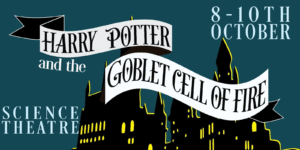
Written by RACHEL HANLY (edited by ROSEMARY KIRK)
Part 1: Artemisia
Artemisia Gentileschi was a 17th-century Italian Baroque painter who achieved astounding success and acclaim in a time when it was virtually impossible for women to make choices at all, and to this day remains one of the most widely regarded and accomplished Baroque artists. Sadly, contemporary interpretation of her art and her identity as an artist is continually attached to the tragic events of her past, which begs the question: can art and identity be viewed separately? Can we remove art from its persistent association with trauma and pain, or must every artwork have some sort of psychological explanation? A look into the subject of Gentileschi’s most famous artwork is in itself an interesting exploration of identity and how it plays into different styles of representation.
Gentileschi was the daughter of painter Orazio Gentileschi, and from a young age showed an extraordinary level of artistic talent, taking inspiration from Caravaggio’s dramatic use of chiaroscuro lighting and dynamic posing. The majority of her artworks feature biblical subject matter and women portrayed in states of suffering, anger and rebellion are the protagonists, painted in bright colours and bold brushstrokes. Gentileschi would eventually become the first female member of the Accademia di Arte del Disegno in Florence, a prestigious academy of fine arts associated with numerous other significant artists.
Unfortunately, we must discuss the historical events that often eclipse discussion about Gentileschi’s art. In 1611, at the age of 18, she was raped by an artist her father had hired as her tutor. As she had been a virgin, Gentileschi’s family were able to press charges, and he was eventually sentenced to 5 years in prison, which he ultimately never served. The infamous public trial, in which Gentileschi partook in the prosecution of her rapist and was tortured as a means of ‘validating’ her testimony, sheds light on her sheer resilience in a society that mistreated and violated her to an unimaginable degree.
Part 2: Judith
The story of the beheading of Holofernes by Judith is an interesting case study of how experience shapes interpretation and thus representation. In the biblical account, the city of Bethulia is under siege by the Assyrian general Holofernes. The beautiful Judith and her handmaid enter his tent and Holofernes, enamoured, lets down his guard. When he is sufficiently drunk, Judith beheads him with his own sword and brings his head in a basket back to her city as a saviour of the people.
Early portrayals of Judith before 1500 show a virtuous and upright figure, similar to depictions of the Virgin Mary. In the later Renaissance period, however, Judith begins to evolve into what can only be described as some sort of Renaissance femme fatale – a seductress coyly brandishing the severed head of her foe.
Baroque portrayals onwards of 1600 characteristically become more dramatic and violent. Caravaggio takes a non-conventional approach, choosing to portray Judith at the time of the execution, frozen in a moment of dynamic movement.
Gentileschi’s version takes this well-known subject and gives it new life. Inspired by Caravaggio’s version, she too picks a moment of action, but on inspection, it’s easy to see the differences that cause so much discussion of her motives. In Caravaggio’s version, Judith seems detached, almost disgusted by the task, with the animalistic Holofernes separate from her, in the other half of the painting. Gentileschi’s is markedly more physical; Judith’s face is determined, and the three figures are entwined, blood spurting gruesomely from the centre of the artwork. The direction of their limbs draws the eye towards the severing of Holofernes’ head, confronting the viewer.
The depiction of Judith as a pillar of strength, in comparison to past portrayals, seems to be the logical artistic choice considering the violent subject matter. Many interpretations suggest that Gentileschi, in illustrating Judith’s rage, represents her own feelings towards her rape and mistreatment. However, others argue that this train of thought disregards what she stood for as an artist – by reducing her career to one incident, we ignore Gentileschi’s artistic vision and ability to tell stories of nuanced women who move away from the polarised depictions of their past. Maybe there’s no meaning behind it, and Gentileschi is simply redoing an old classic in her own style. It feels natural and comforting to put a concrete explanation behind everything in a world in which information is both so highly valued and so easily acquired, especially in a field such as Medicine. The way we view the role of mystery and art can seem counterintuitive to a medical brain which seeks objective truths, but maybe there can be merit in accepting that mystery and vagueness play a significant role in shaping our lives.
Needless to say, it is evident that our experiences are integral to shaping how we see and interpret the world, and it is not often that we can separate a creator from the influences of their time. Sometimes ambiguity is what makes things exciting and keeps us curious. Anyway, it’s interesting to speculate, but ultimately stories of the past remain just that- something to think about, something to romanticise.
















































































































